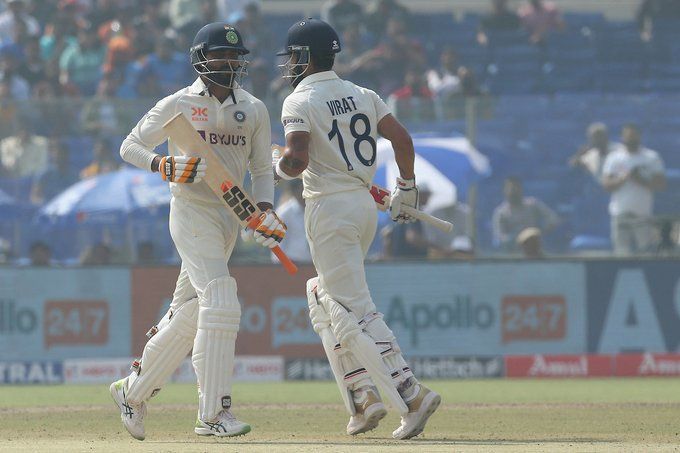
[Watch] Virat Kohli receives thunderous welcome from Delhi crowd as he comes out to bat in 2nd IND vs AUS Test
Team India's star batter Virat Kohli received a tremendous response from the crowd at the Arun Jaitley Stadium in Delhi on Day 2 of the ongoing second Test against Australia on Saturday, February 18.
Kohli walked out to bat on his home ground during the 20th over of the Indian innings. The spectators were ecstatic to see their hometown hero and gave him a huge ovation. From loud chants to posters, fans made the veteran batter's walk from the pavilion to the pitch a memorable one.
Here's a video of Kohli coming out to bat at his home ground:
Notably, the ongoing Delhi Test is a memorable one for Kohli, as it is the first time that he is playing a Test match at the venue since the stand was named after him. The Virat Kohli stand was unveiled in 2019.
The right-handed batter has a fantastic record at the Arun Jaitley Stadium. He has 467 runs to his name in three Tests at a fantastic average of 77.83. Kohli last played a Test match in Delhi in December 2017, in which he played an awe-inspiring 243-run knock against Sri Lanka in the first innings.
Virat Kohli and Ravindra Jadeja steady the ship for India on Day 2
India found themselves on the back foot following the dismissals of Rohit Sharma, KL Rahul, Cheteshwar Pujara, and Shreyas Iyer in the morning session of Day 2.
Virat Kohli and Ravindra Jadeja batted with great resilience to bail their side out of trouble with a 59-run partnership for the fifth wicket. Off-spinner Todd Murphy ultimately broke the stand by dismissing Jadeja for 26 in the 47th over.
Earlier, Australia decided to bat first after winning the toss in Delhi. The visitors put up a decent show with the bat, scoring 263 runs. Usman Khawaja was the top performer with the bat for the team, scoring 81 runs. Peter Handscomb also played a vital role with his unbeaten 72-run knock.
For India, Mohammed Shami picked up four wickets, while spinners Ravindra Jadeja and Ravichandran Ashwin finished with three scalps each.

